Whether you agree with his political stance or not, talk show host Rush Limbaugh is noted for his communication abilities — he makes his living as a top-rated radio talk show host. Waking up profoundly hearing impaired might not have been on Rush’s agenda, but just a few years ago he awoke to face this very situation, and shortly thereafter received a cochlear implant.
So what is this “miracle cure” for hearing impairment? Just what is the cochlear implant?
Hearing loss is the third most prevalent chronic health condition in the U.S. (Hull, 1997). It affects more than 32 million adults in this country, and it can significantly (and negatively) impact quality of life. Generally, hearing loss comes on gradually, like a stealthy thief. For some adults, however, hearing loss is sudden, swift, and severe, and unresponsive to hearing aids.
For most adults dealing with age-related hearing loss, today’s hearing aids provide an effective treatment option. However, for those with more severe hearing impairment, occasionally sudden in onset, cochlear implantation is currently the optimal standard of care. The cochlear implant (CI) is a surgically implanted device designed to make sounds audible for individuals with sensorineural hearing loss so severe that they cannot derive significant benefit from conventional amplification devices. The U.S. Food and Drug Administration (FDA) first approved early versions of the implant in the ’80s, and today thousands of adults here and abroad have received cochlear implants. In short, for those for whom hearing aids are not effective, the cochlear implant is nothing short of miraculous.
The cochlear implantation process is not without controversy, particularly from the culturally Deaf community, a small but vocal minority who believe this technology poses a threat to their very existence. Variability among patient outcomes has fueled this debate. However, the over-riding success of the cochlear implant has been undeniable, and this fact has silenced much of the criticism from the Deaf community. The device is now a widely accepted and utilized treatment option for severe to profoundly deafened children and adults.
Factors influencing success
It is clear that children who are implanted at an early age perform significantly better on a variety of tasks than most hearing aid users with a similar degree of loss. (Niparko, 2000) Research also supports the fact that earlier implantation yields superior cochlear implant performance (Fryauf-Bertschy et al., 1997), and not only for children. A continuing concern, however, is the wide range in performance among users. Many factors influence implant success for children or adults, and merit consideration when evaluating, treating, and counseling candidates for cochlear implantation and their families. Onset, duration, and etiology of hearing loss, age at implantation, daily usage patterns, therapeutic interventional strategies employed, prior use of amplification, family motivation and compliance are among the most common variables impacting the success of implant recipients. It is critical to establish realistic expectations for the CI patient and their families regarding the extent of post-operative rehabilitation.
Candidacy
Candidacy requirements for cochlear implantation have become increasingly liberal over the past decade. The following criteria constitute some of the current candidacy requirements:
- Severe to profound bilateral sensorineural hearing loss
- No significant benefit from the use of amplification
- No medical contraindications to implant surgery or utilization.
- Highly motivated family with realistic performance expectations.
The cochlear implant is a device designed to facilitate listening. Once a candidate has been implanted, efforts must be made to provide adequate aural rehabilitation. Implant recipients need structured opportunities to help them identify, recognize, and attach meaning to what they hear. Experience has shown that successfully implanted individuals are able to hear more sounds over a broader range of frequencies than those using conventional hearing aids. Because cochlear implantation provides a dramatic increase in residual hearing for most, results of successful implantation can be dramatic. The cochlear implant enables profoundly deaf individuals to achieve better speech perception, and, as a by-product, develop better communicative skills. The cochlear implant provides improved high frequency hearing ability, and it facilitates speech recognition ability.
It is important to remember that those with cochlear implants do not have normal hearing. Audiometric thresholds for CI users generally range from 20–40 dB HL in the implanted ear. While binaural implantation is becoming more common, initially the procedure is done only monaurally (in one ear), with an option to do a second implant pending the need for and outcome of the first. As a consequence, ability to localize sound for implant recipients is limited until a second implant is done.
For those with implant technology, the system is not perfect. Ambient noise levels inherent to everyday listening situations can be challenging. There remains a huge variability in patient outcome and success, and the rehabilitation process can be daunting. Also confronting cochlear implant recipients is the decision regarding whether to continue the use of amplification on the non-implanted ear.
Nevertheless, for those locked in a world of silence, the implant is nothing short of a miracle. Just ask Rush Limbaugh.
References
Fryhauf-Bertschy H, Tyler RS, Kelsay DM, Gantz BJ, Woodworth GG. Cochlear Implant use by prelingually-deafened children: the influences of age at implant use and length of device use.
Gargiulo, Richard M., (2003). Special Education in Contemporary Society; An Introduction to Exceptionality. Belmont, CA.: Wadsworth
Editor’s note — Dr. Bettie Borton was one of the first audiologists in Alabama to work with patients receiving cochlear implants while working at The Kirklin Clinic in Birmingham. Today, she and her staff offer Montgomery’s only Cochlear Implant programming center for the Tri County region.

